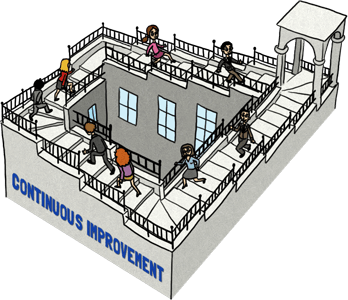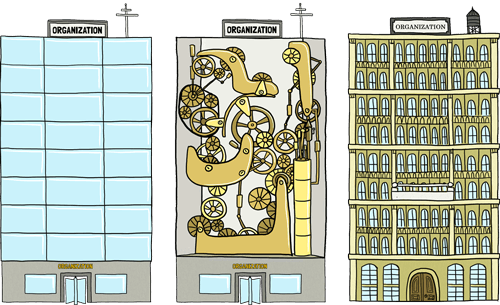Learning Philosophy
Providing people with engaging, relevant and memorable learning experiences are the design principles of the Change Activation Toolkit.
[divider type=”plain” space_before=”10″ space_after=”10″ /]
[tabs type=”vertical”]
[tab title=”Simplicity & clarity” icon=”ICON”]
Simplicity & clarity
[box][column size=”1/2″]
“If you can’t explain it simply,
you don’t understand it well enough.”
– Albert Einstein
[/column][column size=”1/2 last”] [/column][/box]
[/column][/box]
The lack of general change management capacity with organizations as well as the lack of engagement with change efforts contributes to the alarmingly high rate of failure of change initiatives. For these reasons, each module of the Change Activation Toolkit has been designed to explore sophisticated change management concepts in simple, clear and accessible language.
This approach means that people of all backgrounds, seniority, and experience with change are able to quickly become familiarized with best-practice change management concepts and practices.
By being modular in structure, users of the Change Activation Toolkit, (such as change practitioners, senior leaders, managers, supervisors, HR personnel, organizational development officers and trainers) can easily access the resources they need to assist the change process. The animated videos that accompany each module are all between five and nine minutes in duration, optimal for maintaining interest and attention levels whilst introducing valuable ideas in a time-efficient manner. The facilitator guides for each module feature both a knowledge check section with sample answers as well as a terminology guide with straightforward definitions of commonly used jargon. [/tab]
[tab title=”Accelerated learning” icon=”ICON”]
Accelerated learning principles
[column size=”1/2″]
[divider type=”plain” space_before=”5″ space_after=”5″ /]
The Change Activation Toolkit was developed following accelerated learning principles.
Accelerated learning principles are based on the study of the way that the brain acquires and retains information. This approach suggests that learning techniques that engage both the analytical brain as well as the emotional brain are more effective and lead to better integration of concepts and adoption of new behaviors.
[/column][column size=”1/2 last”] [/column]
[/column]
[divider type=”plain” space_before=”20″ space_after=”20″ /][column size=”1/2″]

[/column]
[column size=”1/2 last”]
Sensory Stimulation Learning Theory also suggests that learning is optimized when the senses are engaged (Laird, 1985), with the vast majority of learning occurring through seeing and hearing. The Change Activation Toolkit is highly visual, with a rich palette of colors and creative visual style.
Over 500 hand-drawn illustrations were custom created for the Change Activation Toolkit. Unobtrusive music features in the background of each video that has been developed to underpin the narrative flow of the module. Sound effects with dynamic stereo field effects accompany animations at key points, creating an immersive learning experience.
[/column]
[divider type=”plain” /]
Reference: Laird, D. (1985). Approaches to training and development, Reading, Mass: Addison-Wesley.
[/tab]
[tab title=”Characters & emotions” icon=”ICON”]
[column size=”1/2″]
Characters & emotions
Over fifty unique illustrated characters were developed for the Change Activation Toolkit.
These characters have expressive faces, showing the emotional impact of concepts being demonstrated; whether it is satisfaction from communicating a story about a well-implemented change, or frustration caused by a lack of involvement in the change process.
The characters are consistent across all modules, so whilst each module has been designed to be a stand-alone resource, there is a cumulative learning benefit from seeing how the same characters react when faced with the various challenges and issues covered across the different modules.
[/column]
[column size =”1/2 last”] [/column][divider type=”plain” /]
[/column][divider type=”plain” /]
[column size =”1/2″] [/column]
[/column]
[column size =”1/2 last”]
Characters include:
- Change management leaders
- Senior sponsors
- Supervisor
- Project manager
- Frontline manager / supervisor
- Change resisters
- External stakeholders
[divider type=”plain” /]
Note: the characters are visually and semantically consistent across all Better Business Learning change management materials including our free change management learning resources, allowing the Change Activation Toolkit to neatly integrate with learning programs that already utilize those resources.[/column][/tab]
[tab title=”Symbols & metaphors” icon=”ICON”]
Symbols & metaphors
[column size=”1/2″]
[divider type=”plain” space_before=”5″ space_after=”5″ /]
Imaginative symbolic representations of common features of change initiatives appear consistently across all modules.
These symbols act as useful learning artefacts, promoting retention of key learning points by associating a unique visual cue with an explanation of its meaning. This is particularly salient for learners with visual learning styles.
[/column]
[column size=”1/2 last”] [/column]
[/column]
[box style=”text-align: center;” color=”gray”]
The image of a building is used throughout the Change Activation Toolkit to symbolize various facets of organizations, such as the present situation (left image); processes and systems (center image); and organizational history (right image).
[/box]
Some other examples of the symbols featured through the Change Activation Toolkit:
- we can zoom in to remind ourselves that no change can occur without the buy-in of the individual
- organizational culture can be represented as another layer behind the organizational facade
- environmental change drivers
- organization must adapt – we literally see the organization change shape, size and form in response to a threat
- choosing a change management methodology: cars as methodologies / ad-hoc change
- why changes fail: ships leaving port on a journey with only 30 per cent reaching destination
- gap analysis: leaping over a chasm
- thinking about organizational change: continuous improvement as an ‘Escher-like’ constant work in progress
[/tab]
[tab title=”Review & consolidation” icon=”ICON”]
Review & consolidation
Each Change Activation Toolkit video is concluded with a review summary.
This helps delegates to identify the key learning points from the video as well as consolidate and retain these concepts. The review summaries are presented both through the narration as well as on-screen in text-form, to accommodate both auditory and visual learners.
The video summaries are also provided in PDF form to be printed as job aid handouts that can be given to delegates as ongoing reminders of the key learnings presented in each module.
[/tab]
[tab title=”Discussion & reflection” icon=”ICON”]
Discussion & reflection
Active consideration of the ideas presented in relation to personal experiences deepens comprehension of the ideas and commitment to the adoption of new behaviors.
Each module features plenary-session discussion questions and learner activities designed to encourage participants to further consider the video they have viewed. These can be utilized immediately following the screening of the videos, at a later stage or independently by the learner depending on needs.

The activities and handout materials included with each module integrate artwork from the videos, acting as rich reminders and providing a consistent link between the videos and these learning activities, promoting reinforcement of the module’s ideas.
‘Personal reflection’ questions are interspersed throughout the learning activities and have been designed to assist learners to reflect on how the ideas relate to their own situation and experiences during change management initiatives.[/tab][/tabs]
[divider type=”plain” /][divider type=”fading” /][divider type=”plain” /]
[content_module module=”7078″ /]
